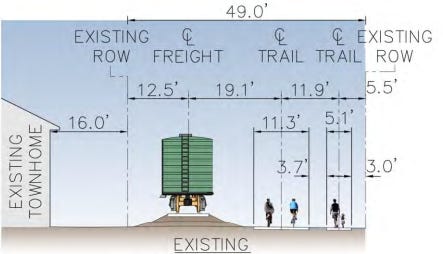The Next Big Things Revisited
On January 8, 2010, I was interviewed by the Jim Foti of the Minneapolis StarTribune for their beginning of the decade article The next big things
My bit below, with comments, numbers added for tracking:
COMMUTING New light-rail lines, many more MnPass lanes and cars that make driving decisions for you are in the commuting forecast for the next decade, says David Levinson, a civil engineering professor at the University of Minnesota. (1) Congestion levels won’t change much, he said.
Mostly Correct. Obviously it depends on how you define "congestion" and "much". MnDOT's Congestion Report (not how I would define it, but it is a consistent time series), has percent of the urban freeway system that is congested going from 21.5% in 2010 to 24.2% in 2018 over a decade with a regional (MSA) population increasing from 3.3 to 3.6 million (8.4%) over the same period. (The CSA went from 3.7 to 4.0 million, 9%). Mean commuting time to work in Hennepin County rose from 22.1 to 23.5 minutes. Some of that is due to congestion, some of that is due to longer distances as suburban growth continues.
(2) The Twin Cities area will have more residents, (3) but the aging population will be working less, and (4) increased telecommuting will mean that people won’t go into work as often.
Correct, correct, correct. The Median age in Hennepin County when from 35.9 (2010) to 36.6 (2018) according to the US Census. The Labor Force Participation Rate dropped from 71 to 70.3 over this period. Telecommuting increased, in 2018 5.7% of Minnesota residents worked at home, in 2010, 5.0% did.
(5) The Southwest and (6) Central Corridor rail lines are scheduled to start mid-decade, and (7) one or two Minneapolis streetcar lines could be in the mix.

Section B-B
Incorrect (it was scheduled, it did not happen yet), Correct, ~ (could is vague). Central Corridor started in 2014. The Southwest LRT (Green Line Extension) is under construction, but not opened. The streetcars appear dead, but these things never die.
(8) Levinson expects highway expansion to mainly take the form of new MnPass lanes, which are for carpools, buses, motorcycles and toll-paying solo drivers.
50%. Some highway reconstruction has a MnPass element, but not as much as I expected.
(9) He sees plug-in hybrids as the dominant car, meaning drivers will be buying less gas, so (10) a per-mile fee will be implemented to replace lost tax revenue.
Incorrect, incorrect and too soon. Hybrids petered out, and EVs are still slow on the uptake. I still expect EVs to be dominant in new car sales by 2030, and some kind of distance fee to be implemented on EVs and AVs by then.
(11) Cars will keep getting safer, he said, with (12) features such as automatic emergency braking and cruise control that adapts to the speed of surrounding traffic.
JIM FOTI
Correct, correct. Advanced driver assist technologies have been added to newer vehicles. Fatality rates are not where they should be, (especially for pedestrians and bicyclists), but fatality rates are better falling from 2010 (0.72) to 2018 (0.63).
A total of 12 numbered predictions basic predictions, 6 correct, 3 clearly incorrect, 5 too vague and half-right by my scoring.

